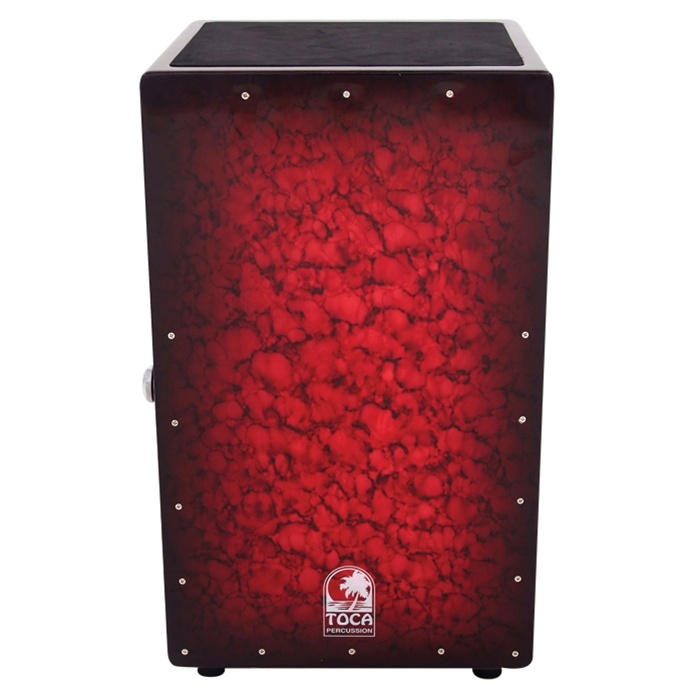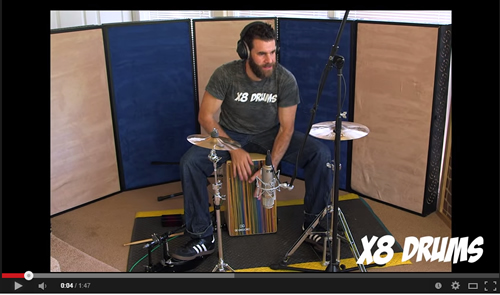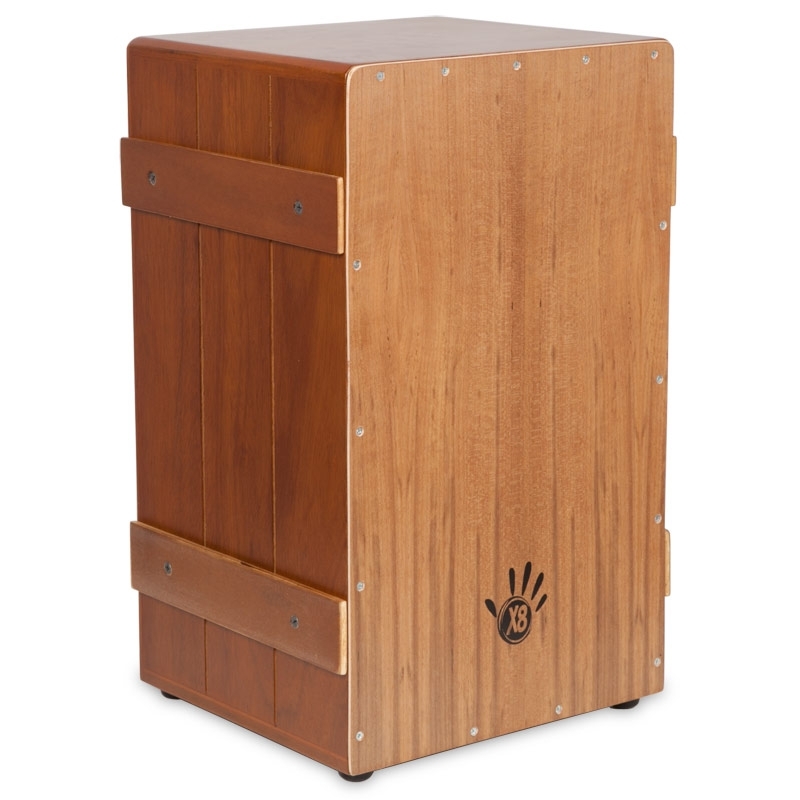Translating Rhythm: From the Drum Set to the Cajon Drum

Finding a new drum or hand percussion instrument to play is one of the best things about being a drummer. No matter if you started out on a set of bongo drums or you were a drummer in your school’s marching band, once you’re bitten with the percussion bug, it can be hard to ever let that excitement go.
For the drum set drummer, all of those hours spent learning the basics and practicing rudiments can lead to a really great experience drumming in a band, on stage or in a studio. Since a drum set has several drums that are played together, in a sense, you’re really doing the same work as three or more people, considering a basic bass drum, snare and cymbal setup. Add more drums, cymbals and percussion instruments to your rig and it can seem like you’re never going to have enough arms and legs to get the job done right.
Then, you realize that some “drummer” in front of a coffee house is playing the beat to your favorite song… while sitting on a box… and it sounds pretty fantastic. Then you think… how could I ever possibly play my fantastic groove on a box? A cajon drum? IMPOSSIBLE!
Not really. In fact, it’s a lot easier than you think, especially when you’re already drumming your heart out.
Cajon drums are essentially wooden boxes that are acoustically built for drumming. Hailing from Peru, these drums initially were a huge part of Afro-Peruvian music, especially Flamenco, but they have since been found in just about any genre of music that soaks up an “unplugged” vibe. Cajons have two basic sounds, unlike your drum set. There is the bass sound that comes from striking the instrument’s front “drumhead,” or “tapa,” and then there are the higher accent sounds that come from the corner area of the drum.

The middle of the drum is your bass or kick drum, and the sides/corner are your toms and/or snare drums. Some cajons will include snares to really grab the rasp of the beat, or, you can customize your cajon’s sound to your liking (one of the perks of the drum!). You can also use a kick pedal to beat the “bass” of the cajon, giving you the ability to play with both hands and a foot, which might feel a little more familiar to the drum set drummer.
Once you master the basic anatomy of the cajon, translating the rhythm should be pretty simple to figure out: bass in the middle, accents on the side. Now that you’ve got the beat, you also have an instrument that has become a great replacement for your drum set, especially in acoustic settings.

Cajon drums also can be played with other accent percussion or cymbals to really increase the “drum set” feel, with an acoustic sound. You can play a hi-hat as you normally would, strap on some wrist or foot percussion jingles (tambourines for your feet!) or use brushes or cajon drum sticks for an even more “real” feeling to your drumming. The potential in these box drums is unlimited, and worth every moment you spend on them, especially if you’re ready to increase your percussion skills overall.
There actually isn’t a technique for translating drum set rhythms to cajon drums – the rhythm you play on a drum set is adapted to an entirely different instrument, but, that is a huge part of the fun. As a drummer, you know the difference between the sound of every size tom or snare you’ve played, and how different types of drum heads (or cymbals, or drum sticks, or kick pedals, etc.) affect sound… which means you know how to play with those sounds to find a cajon drum translation.
Translating a drum set rhythm to cajon drums is just your own interpretation of what is behind the songs you love to play – and that’s pretty much what all drumming is about, anyway.
Recent Posts
-
X8 Drums Play-Along Backing Tracks
The new X8 Play-Along Series is being produced for our musician friends wanting a fresh way to work …9th Feb 2025 -
What is the Best Size Djembe for Beginners?
If you're new to the world of percussion and interested in learning the djembe, you're in for a t …16th Jul 2024 -
The Benefits of Becoming a Drumming Teacher: Transforming Passion into Profession
Why become a drumming teacher? Becoming a drumming teacher is an excellent way to share your pas …22nd May 2024



